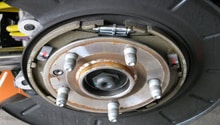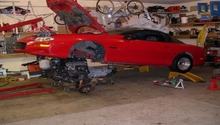Camaro and Firebird: How to Change a Tire
If you end up on the side of the road, it should only be for a little while. Learn how to change a flat tire with this easy guide and get back behind the wheel.
This article applies to the Chevrolet Camaro (1990-Present).
Your wheels take lots of abuse through daily driving. Occasionally, you may experience a flat tire. If you don't have the knowledge of replacing the bad tire with your spare, you could be left stranded. This could amount to hundreds of dollars in tow service bills, not to mention the cost of repairing the bad tire. Luckily, with some standard hand tools that may already be provided with your vehicle, this service is rather easy to perform.

Materials Needed
- Tire iron
- Jack and jack stands
- Spare tire
- Mallet (optional)
Step 1 – Safety first!
If you notice while driving that your tire has gone flat, it's imperative to pull over safely before servicing the problem.
- Pull off the freeway if possible. If not, then pull to the shoulder lane with your hazard lights on.
- Park the vehicle on safe, level ground.
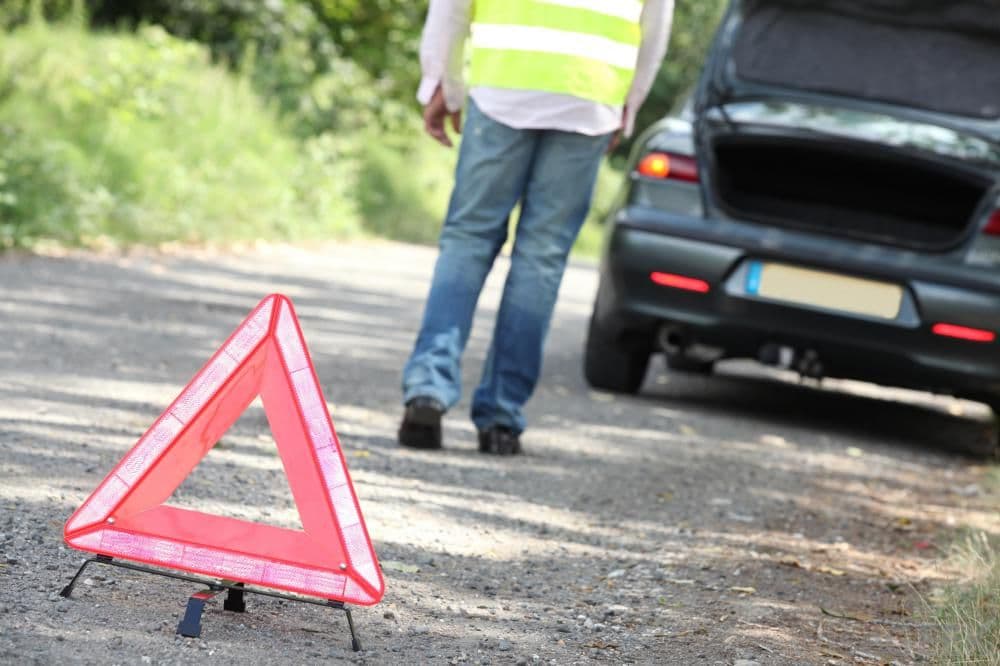
Pro Tip
Turn your hazard lights on to indicate to other drivers on the road to steer clear of your vehicle. Some vehicles are equipped with warning triangles, which can also be placed a few feet behind the vehicle to alert drivers further away to keep clear of the area you have parked the disabled vehicle.
Step 2 – Locate spare tire and tools
Unless you have an impact wrench handy, you'll need the right tools to get this task done.
- Remove the cargo cover.
- Remove spare tire and tools kit, then set it aside.

Pro Tip
On some models, you may need to remove the trunk access panel.
Step 3 – Loosen lug nuts
Unless you have a cordless, fully charged, impact wrench handy, you'll need to loosen the nuts before raising the vehicle.
- Use a tire iron or lug nut wrench to loosen each lug nut on the affected wheel.

Pro Tip
If you have a wheel cover, use a flat head screwdriver (usually part of your spare tire kit) to pry and remove the cover.
Step 4 – Raise the vehicle
Once the wheel is loose, the vehicle will need to be raised to remove the bad tire.
- Secure the jack on a level surface.
- Secure the rear wheels with chocks.
- Raise the vehicle.
- Secure the chassis with jack stands.
- Remove the lug nuts and set bad wheel aside.
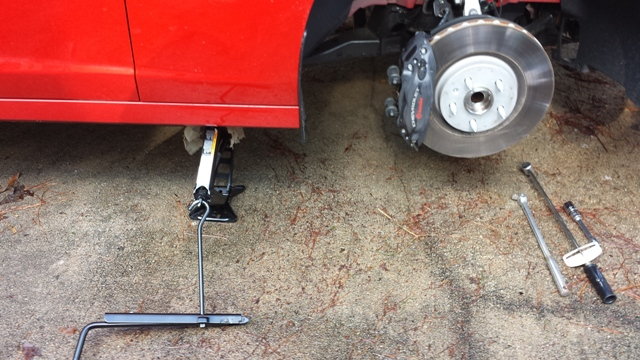
Pro Tip
If the car is a manual, place it in first gear and pull the e-brake up to ensure the car doesn't roll forward.
Step 5 – Install spare tire
With the vehicle in the air, the spare tire can be installed.
- Align the spare to the lug holes on the hub.
- Install the lug nuts and tighten by hand.
- Lower the vehicle and tighten the lug nuts with the tire iron.
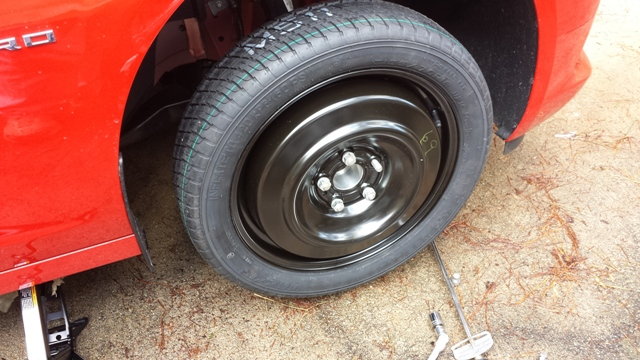
Pro Tip
Replace the spare tire kit and cargo cover. You may need to place the bad tire atop the cargo cover, as it may not fit in the recess where the spare tire was.
Featured Video: How to Change a Flat Tire
Related Sites
- Chevy Camaro: User Manual - ManualMachine.com
- How to Change a Flat Tire - CamaroCarPlace.com


